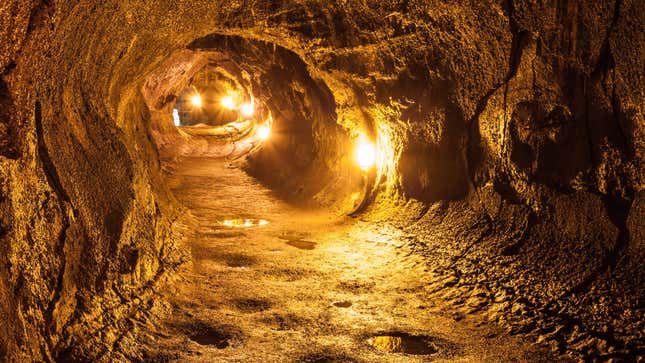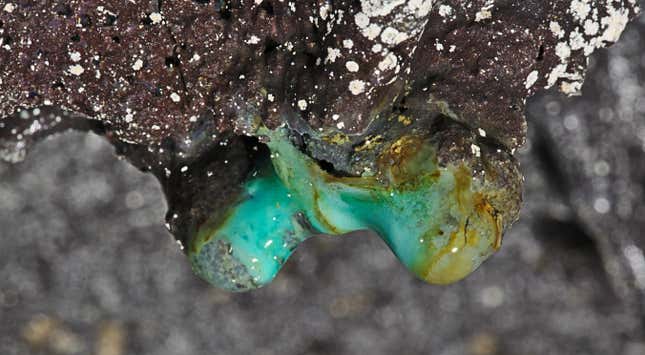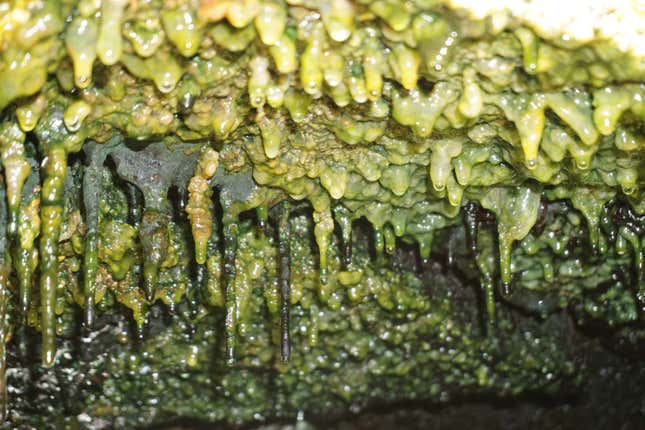
Hawaii’s volcanic environments contain a rich array of mysterious microbes, new research this week has found. Scientists say that the islands’ lava caves and other structures created by volcanic activity have unique, diverse, and still uncharacterized communities of bacteria living inside them. The findings indicate that there is much left to learn about life in some of the most extreme conditions on Earth.
Researchers at several universities and NASA collaborated for the study, which was published Thursday in Frontiers in Microbiology. They studied samples collected from 70 sites along the Big Island of Hawaii, the largest island of the Hawaiian archipelago. These sites included caves, tubes, and fumaroles, which are openings or vents where volcanic gasses and water can escape. They analyzed and sequenced the RNA found in the samples, allowing them to create a rough map of the bacterial communities living there.

Some of these areas, particularly those with ongoing geothermal activity, are the most inhospitable places in the world, since they are incredibly hot and filled with chemicals toxic to most living things. So the research team expected to find relatively little variety of life nestled within the sites that had these extreme conditions. Older caves and tubes that were formed over 500 years ago, the researchers found, did have greater bacterial diversity. But to their surprise, even the active geothermal vents were filled with a wide variety of bacteria. And compared to the other sites, the bacterial communities in these harsher habitats also appeared to be more complex in how they interacted with one another.
“This leads to the question, do extreme environments help create more interactive microbial communities, with microorganisms more dependent on each other?” said study author Rebecca Prescott, a researcher at the NASA Johnson Space Center and University of Hawaii, in a statement. “And if so, what is it about extreme environments that helps to create this?

The bacteria found in these sites also rarely overlapped, meaning that these environments seem to host their own unique microbial worlds, with at least thousands of unknown species left to be identified. One group of bacteria in particular, known as Chloroflexi, might be especially influential, though, since they were commonly found in different volcanic areas and seemed to interact with many other organisms. And it’s possible that they may be an example of a “hub species”—microbes vital to the structure and function of their communities.
“This study points to the possibility that more ancient lineages of bacteria, like the phylum Chloroflexi, may have important ecological ‘jobs,’ or roles,” said Prescott. “The Chloroflexi are an extremely diverse group of bacteria, with lots of different roles found in lots of different environments, but they are not well studied and so we don’t know what they do in these communities. Some scientists call such groups ‘microbial dark matter’—the unseen or un-studied microorganisms in nature.”
These sorts of genetic sampling studies can provide a broad view of the bacterial world found in a particular place, but not more detailed information about individual species or the roles they play in their tiny neighborhoods. So the scientists say that more research is needed to decipher the mystery of these volcanic inhabitants. In time, what we learn may be relevant to our understanding of how life began on the Earth or even on Mars, since these environments might be the closest existing analog to what the planets looked like long ago.